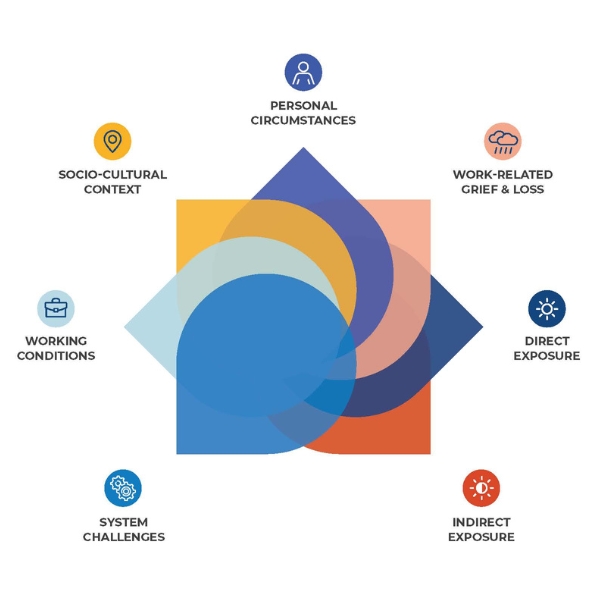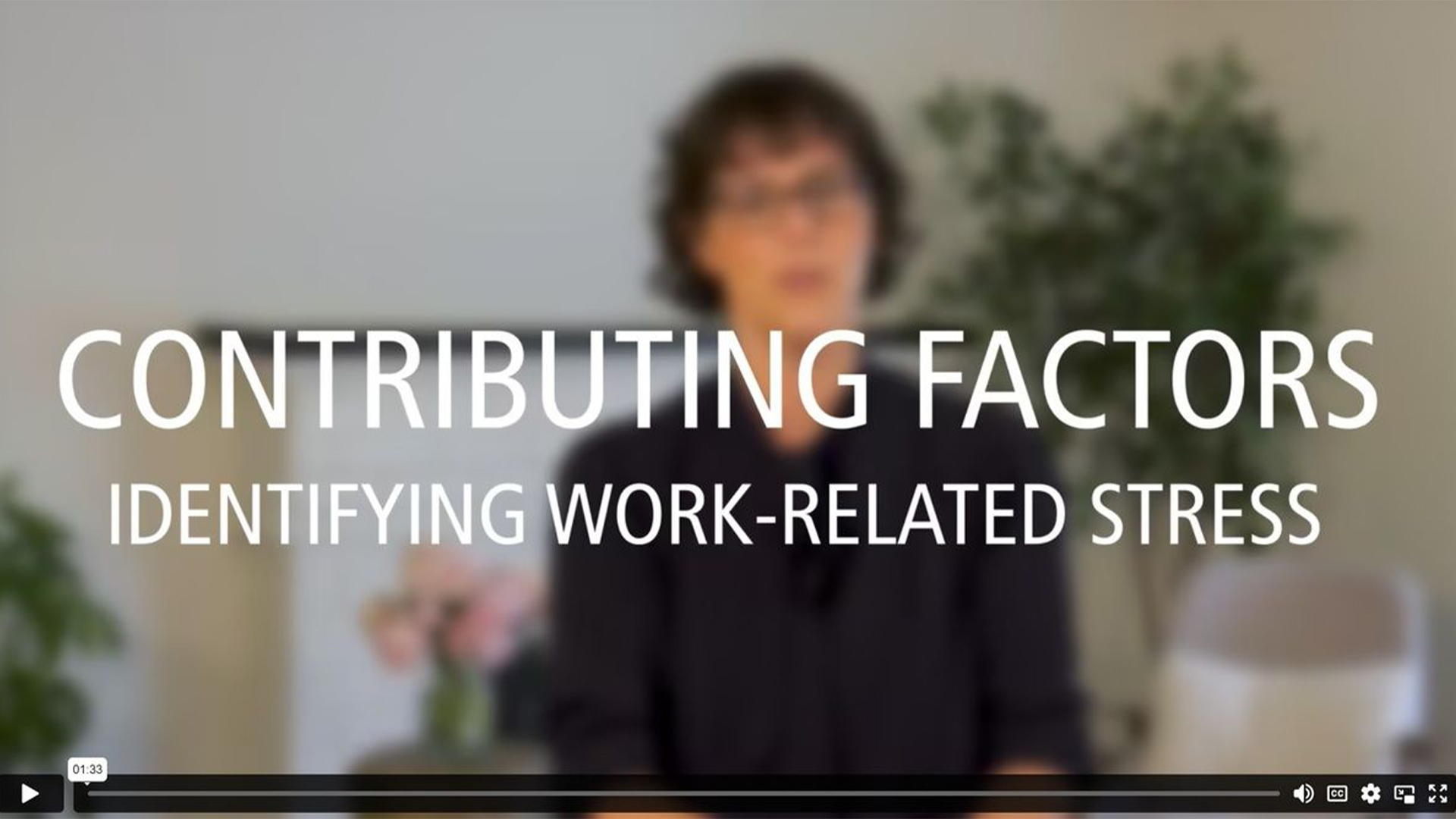Contributing Factors
Identifying Work-Related Stress
Contributing Factors
About the Strategy
As helping professionals, we experience stress and trauma on a daily basis. It is easy to become entrenched in our lives and professional work, often losing sight of what is contributing to our stress in the first place.
The first step to managing experiences of work-related stress is to identify its source. The Contributing Factors model can help you to understand your risk factors for developing burnout, secondary traumatic stress, empathic strain, moral distress, and other related challenges.
This model covers seven domains of potential risk-factors: Personal Circumstances, Work-Related Grief & Loss, Direct Exposure, Indirect Exposure, System Challenges, Working Conditions, and Socio-Cultural Context.

This tool was developed by Françoise Mathieu, TEND, Leslie Ann Ross, UCLA, and the Secondary Traumatic Stress Consortium, a group of researchers, trainers, practitioners, and advocates with a common goal to advance the field of secondary traumatic stress towards health. Special thanks to R. Cuellar, A. Hendricks, M. Clarke, and G. Sprang of the National Childhood Traumatic Stress Network (NCSTN) for contributing the Socio-Cultural Context circle.

Video Resources
In this 9-part video series, Françoise Mathieu explains each element of the Contributing Factors model and shares best practices for using this strategy with teams.
Understanding the Contributing Factors

PERSONAL CIRCUMSTANCES
Personal circumstances include such things as your life history, coping style, personality, and caregiving demands or responsibilities. These factors may impact your ability to manage work-related stress.

WORK-RELATED GRIEF & LOSS
Feelings of grief and loss can surface during situations of “unfinished business” or during times of disruption in the workplace.

DIRECT EXPOSURE
Direct exposure means that a traumatic event is happening directly to you or in front of you.

INDIRECT EXPOSURE
Indirect trauma means that you experience a traumatic event second-hand through hearing, seeing, or reading about it.

SYSTEM CHALLENGES
System challenges refer to the “red-tape” or roadblocks that prevent you from giving the best possible care or services to your clients, patients, or customers.

WORKING CONDITIONS
Working conditions refer to the quality of your workplace experience and includes relationships with supervisors and peers, perceptions of fairness and appreciation, and your workload.

SOCIO-CULTURAL CONTEXT
The term socio-cultural context refers to the intersection of race, culture, gender, sexual orientation, religious beliefs, historical trauma, and other elements that define your identity. These factors may come into daily collision with the socio-political factors of your community including the rules, regulations, laws, and political climate of where you live and work.

